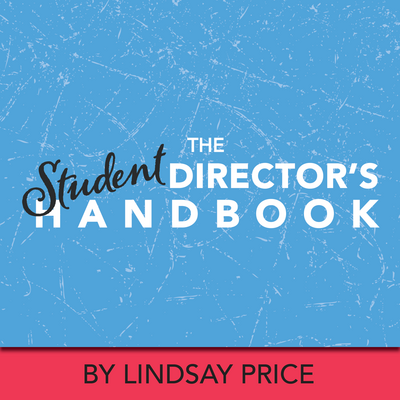How to Develop and Empower Student Directors
Have you ever had a student who’s a natural leader and has a knack for staging? Or maybe a student who isn’t comfortable in the spotlight but loves the creative process? These could be your budding student directors, and giving them the tools to step into this role can be an amazing growth opportunity — for them and your program.
Why Student Directors Matter
Creating student directors isn’t just about making your life easier (though it does help!). It builds:
- Leadership skills
- Collaboration & communication
- Creative thinking & problem solving
- A deeper appreciation for all aspects of theatre
Plus, student-directed scenes or one-acts can be an exciting addition to your drama program.
Consider the following for your student directors and set them up for success.
1. Start with the basics.
Before a student steps into the director’s chair, they need to understand what a theatre director actually does.
- Break down the role. Explain that directing isn’t just “telling people what to do”; it’s about vision, visualization, storytelling, and collaboration.
- Discuss responsibilities. These include choosing a concept, blocking scenes, working with actors, and overseeing technical elements.
- Share examples. Show behind-the-scenes clips or interviews with directors to illustrate how they think and work.
2. Teach them how to read a script like a director.
Directors need to know how to analyze a script and use that analysis to visualize the play (taking words on the page and making them three-dimensional through stage pictures, character journeys, and action), and create a vision. In theatrical terms, a vision is a concept, an interpretation. The vision is going to shape the look and feel of the play. A vision is something that can be communicated to every department to give the production a cohesive look. It’s going to affect how the audience responds to the play. A vision is what makes a director’s take on the play unique.
It all starts with the script. Show your student directors how to read a script to:
Look for themes and tone:
- Ask students to read a script, determine the main themes of the play, identify their point of view on those themes, and then consider how they will visualize their point of view.
- Based on the above work, ask students to come up with a one-sentence vision statement. How do they interpret the play?
- Do this several times. Get students in the habit of visualizing and creating a vision.
Identify character arcs:
- What journey does the character go on in the play? Where do they start and where do they finish? How does the character arc connect to your vision of the play? You want to be able to communicate that connection to actors so that any character development work they do will match your vision.
- Ask students to read the same script as above and write out the journey of the main character. How does this character’s journey match your vision?
Highlight key beats in each scene:
- Identifying beats in a scene is known as scoring. To score a scene is to mark the moments in which a character’s action/tactics change.
- A director needs to know this to help block the action, identify the pace in a scene, and solidify character journeys. It all comes back to visualization.
- Take one scene in the above script. Ask students to score the scene and then use that scoring to come up with blocking suggestions.
Bonus Exercise: Watch three movies by well-known directors with varying styles: Steven Spielberg, Tim Burton, and Alfred Hitchcock, for example. Watch the movies with a director’s eye. What is the director’s vision? What is the theme of the movie, what is the director’s point of view, and how has that been visualized? Compare and contrast the three directors.
3. Let them start small.
Give student directors a low-pressure directing opportunity:
- Direct a scene or monologue. A quick, one-page scene is a perfect starting point.
- Lead a warm-up or theatre game. It helps them practice giving clear instructions and managing a group.
- Assist YOU. Have them shadow you during a rehearsal to see how you guide actors and make decisions.
The goal is to build their confidence in small steps.
4. Emphasize communication & collaboration.
Student directors often think they have to “be the boss.” There is a difference between leadership and being bossy. Teach them that great directors:
- Ask questions instead of giving orders.
- Listen to actors’ ideas.
- Give feedback that’s kind and constructive.
Exercise: Role-play common directing scenarios in which directors have to deal with different types of actors so they can practice how to talk to actors in a way that motivates instead of intimidates.
5. Encourage creative problem solving.
Things will go wrong — that set piece you really wanted can’t be built, an actor isn’t presenting their character in line with your vision, blocking doesn’t work. Challenge your student directors to figure out ways to solve different problems. This helps them develop flexibility and resilience — key directing skills.
- Come up with practice scenarios in which student directors can brainstorm solutions. If you can’t have a couch for this scene, what could you use instead? or How can you further communicate your vision to an actor? or Is there another way to physically show tension in the scene?
6. Give them real responsibility.
When they’re ready, let them direct a short play or festival piece with your mentorship. They’ll learn the most by doing it. Be clear about:
- Deadlines
- Expectations
- How you’ll support them and when you’ll step back
7. Reflect & celebrate.
After the experience, take time to reflect together. Celebrate their effort and growth. Even if it wasn’t perfect, they took on a huge challenge!
- What worked well?
- What was harder than expected?
- What would they do differently next time?
- Do they think they have the skill set to be a director? Why or why not?
Additional Reading
Exercise: Problem-Solving for Student Directors
Seven Tips for Student Directors in the Classroom
Theatrefolk’s Top 10: Plays for Student Directors
Student Directing: Working With Your Peers
Related Articles
The Student Director's Handbook
by Lindsay Price
Help students take their show from first audition to opening night with The Student Director’s Handbook. This easy-to-use ebook is full of guidelines, tips and templates designed to help students create a vision, circumvent problems and organize rehearsals on their way to a successful production.
The Rehearsal Companion
by Kerry Hishon
You’ve chosen the play, paid the royalties, done the script analysis, held your auditions, and cast the show. Tomorrow is the first rehearsal. Are you ready? Really ready? The Rehearsal Companion can help!





